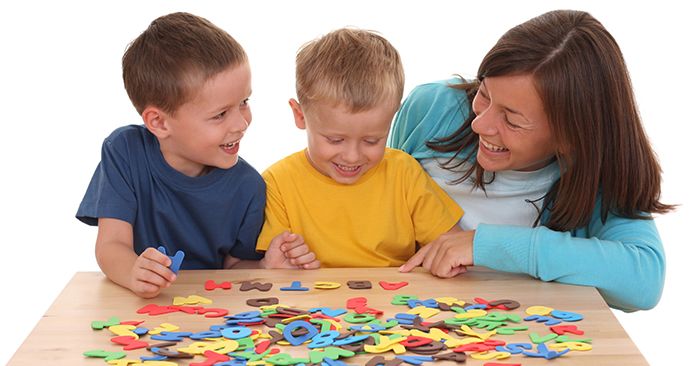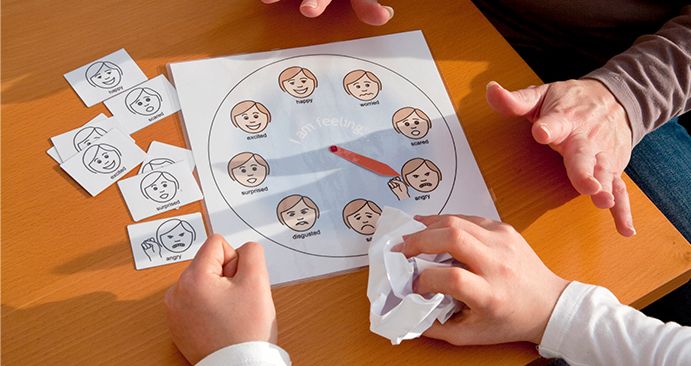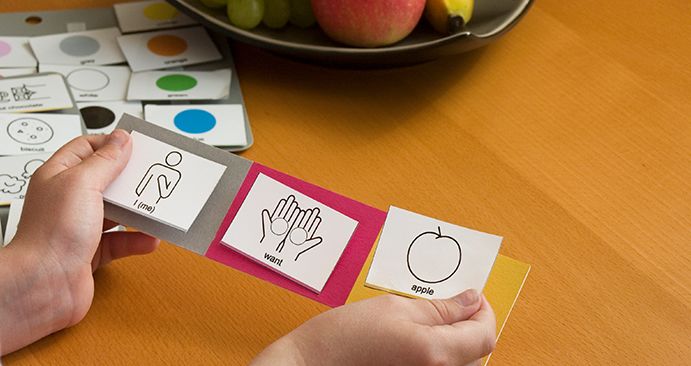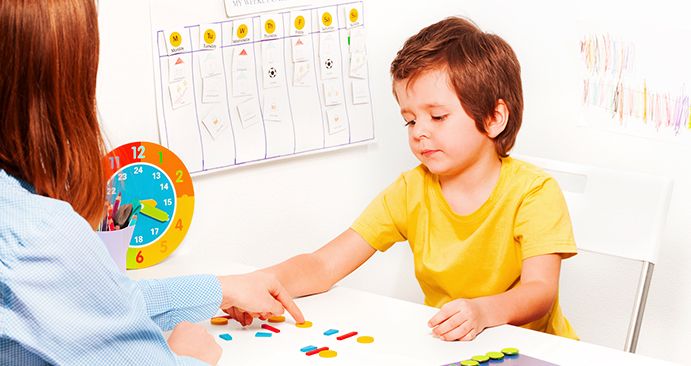5 Actionable Strategies That Will Give Your Non-Verbal Child a Voice
Updated on March 12, 2024
Communication is an integral part of everyday life. And yet many children with special needs remain shut out and disconnected from the people around them simply because they can’t convey thoughts, ideas and feelings coherently. This frustration often forces special children to find other outlets to express themselves, and causes them to act out. And this isn’t necessarily a bad thing. What’s worth remembering is that while your child may not learn to speak verbally, it is possible to teach them to express what they want and feel in ways that others understand.
One of the most damaging misconceptions about language development is that children who aren’t speaking by age 4, are likely to remain non-verbal. Research suggests that this isn’t the case with some special needs children learning to speak as adolescents. The research found that 47% of those included in the study went on to become fully verbal. While this is promising news, the importance of alternative forms of communication cannot be overlooked. Special children can learn to communicate in their own way if given the necessary tools. Alternative communication systems may help non-verbal children with special needs go on to lead more fulfilling lives.
Understanding how your special child communicates
Most non-verbal children do communicate. They just do so in ways many of us fail to understand. Observe your child closely, and you’re likely to notice their unique communication patterns. While they may not respond to their name or other attempts to engage with them, they may gesture, point, cry or take your hand. Behavior like this is often a sign that your child is trying to tell you something.
One of the most interesting indicators to look out for is mimicking other’s words. This is very positive, and shows that your child’s language skills are developing. Over time your child may begin to memorize those words, and you may notice that they start using them on their own in different situations.
Tips for promoting language development in your non-verbal child
There are many different techniques and theories about how you can help a non-verbal child communicate. Some treatments, including the medical approach to language development, are seen to be more controversial than something more mainstream like speech therapy. It’s important to judge each approach on its own merits, and keep in mind that not all therapies will work for you child. Be open-minded and don’t be afraid to experiment with different techniques.

We decided to focus on augmentative and alternative communication (AAC) strategies as many of these techniques can be implemented with relative ease at home. AAC includes all forms of communication other than speech. It’s an alternative way for children who struggle with verbal communication. In addition to improving a child’s ability to both use and understand language, AAC helps develop a child’s vocabulary and can be used to teach a child to make eye contact.
Interestingly and contrary to popular belief, there is also research which suggests that AAC may actually enhance a non-verbal child’s natural language development. The research indicates that AAC can be used to help special children develop their vocabulary as well as their ability to articulate clearly. This is largely because visual learning has been found to have a positive impact on the development of communication skills in children with special needs. AAC also helps special children understand how communication works, and limits interactions to key concepts making it easier for children to express themselves.
Here are some AAC strategies you can implement at home.
1. Create communication boards
A communication board can help a non-verbal child communicate without stress or anxiety. These boards depict visual representations of an idea or feeling. When a child wants to convey something, they’d point at one of the picture boards.

For example, you could ask your child what color playdough they want to play with and then show them a communication board with different colors. You would then give your child the playdough in the color they pointed at. These boards are easy to make at home, and should be tailored to suit your child’s interests and likes. Here’s an example of a sophisticated communication board which can help a child relay more complex ideas.
Tip: To ensure the efficacy of this technique, be sure to always give positive feedback and reward your child by giving them the object they pointed at. This way a non-verbal child will learn that pointing at things is an effective way of communicating as opposed to crying or acting out.
2. Teach your child to make abstract associations
This technique works in a similar way to a communication board in that it requires associative thinking. However instead of presenting your child with a communication board, you would teach your child to point at or bring you a visual representation of what they want. If, for example, your child is hungry you could teach them to bring you a plate.
Tip: It’s a good idea to choose one object to represent each specific idea your child might want to convey. For example, you could choose one particular plate to symbolize food. This plate should be left on a shelf that your child can easily reach, and shouldn’t actually be used for eating.
3. Use the Picture Exchange Communication System (PECS)
The PECS is also similar to communication boards however instead of simply pointing at pictures, this technique requires a child to hand a picture to the person they’re trying to communicate with. This is a convenient alternative for children with special needs who have poor motor skills, and as a result may struggle with gesturing or pointing at things. Another advantage of this technique is that it accurately mirrors communication as they child has to physically pass the picture to someone else. In this way, the child is forced to interact and engage with others.

Tip: With this technique, practice makes perfect. It’s recommended that a child does at least 40 practice sessions every day. This is the minimum needed to see any results.
4. Model your child’s feelings
An effective way to teach your child to understand and communicate their feelings is to label them. Every time you see your child expressing a particular emotion you need to draw their attention to it by saying something like: “You are hungry.” This can be done for a range of emotions including happiness, excitement, anger and frustration. To make sure your child understands the idea, you can show them the relevant communication board as you label their emotion.
Tip: Be sure to label your child’s emotions consistently. This way your child will learn to associate a particular emotion with their behavior.
5. Expose your child to sign language
For many special children, sign language is a natural way to communicate as gestures are already an integral part of how they convey ideas. A child will point at something they want or wave their hands to indicate something that’s bothering them. Sign language is often easy for special children to learn as many of the signs closely resemble the idea being expressed.
There is also research which suggests that children who are taught to sign may learn to speak more easily. This is because speaking relies on motor planning, a skill which is also integral to mastering sign language. To increase the likelihood that a child will learn to speak, it’s recommended that speech be taught together with sign language. This is because both forms of communication have been found to stimulate the same part of the brain.
While there are many different types of sign language, one of the most effective is what’s known as Signed Speech. This is sign language which combines speech and signing. One example of Signed Speech is Signing Exact English. This relies on the same syntax as spoken English and is therefore an effective basis for speech. The idea with this form of sign is to help children ‘see’ what is being said. In contrast, American Sign Language, has its own unique vocabulary and syntax which often aren’t closely related to speech.

Makaton is another form of Signed Speech which relies on signs and symbols along with speech to communicate. To reinforce any ideas being communicated, body language, facial expressions and speech are also used. The idea behind this form of sign language is that these symbols are far easier to learn and understand than language. The great thing about Makaton is that it’s flexible and can be customized to suit a child’s unique needs and level. The Makaton website has useful resources for learning this sign language. You can also see Makaton in action in the BBC’s Something Special children’s series.
Tip: It’s important to speak when you sign and to encourage your child to look at you when you’re trying to convey something. When your child is still learning Makaton, it’s a good idea to focus on the most frequently used signs, for example the signs for food.
Whether or not your special child learns to speak, it is still possible to give them the necessary tools they need to express themselves coherently. This will not only make it easier and far less intimidating for them to engage with others, but it will also help them make a valuable contribution to society.
Get peace of mind from AngelSense, the groundbreaking AI-based assistive technology designed to enhance safety and peace of mind for individuals with special needs and their families. Our solution ensures you stay connected with your loved ones, empowering a higher level of independence while maintaining safety. Learn more about how AngelSense can make a difference for your family.

